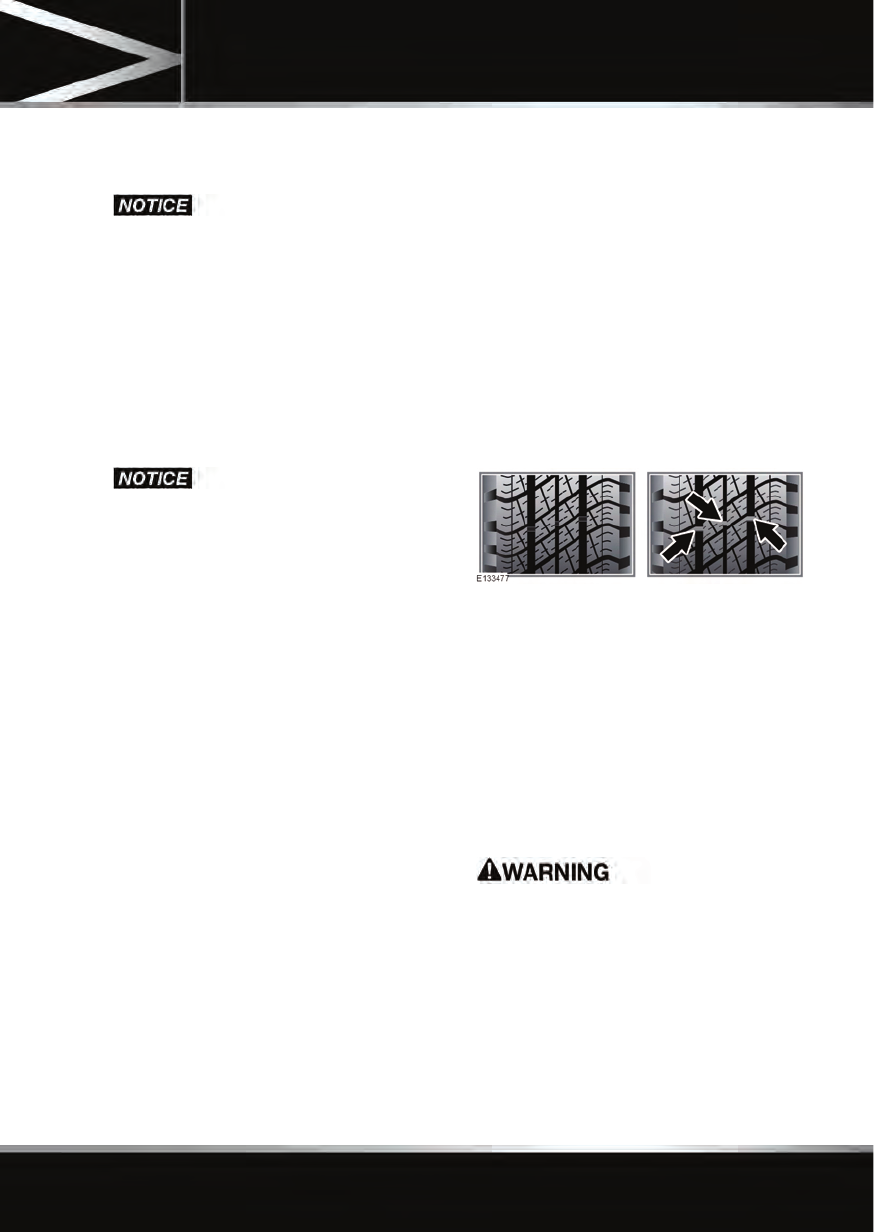
R
(FM8) SEMCON JLR OWNER GUIDE VER 1.00 NAS
LANGUAGE: english-NAS-en; MARQUE: jaguar; MODEL: XJ
Tires
181
ULTRA HIGH PERFORMANCE (UHP)
TIRES
This vehicle is equipped with UHP tire and
wheel combinations designed to provide
maximum dry road performance with
consideration for hydroplaning resistance.
These low profile high speed rated tires may be
more susceptible to damage from road
hazards. UHP tires have performance
enhancing soft rubber tread compounds,
which when driven aggressively experience
rapid tread wear and shorter life than less
performance oriented tires.
These tires are not recommended for driving
on snow or ice, and should be replaced with
winter tires when weather conditions dictate.
UNITED STATES DEPARTMENT OF
TRANSPORTATION
The following information relates to the tire
grading system developed by the National
Highway Traffic Safety Administration which
will grade tires by tread wear, traction and
temperature performance.
Note: Tires that have deep tread and winter
tires, are exempt from these markings
requirements.
UNIFORM TIRE QUALITY GRADING
Quality grades can be found where applicable
on the tire sidewall between the tread shoulder
and maximum section width.
For example: Treadwear 200 Traction AA
Temperature A.
In addition to the markings requirements,
passenger car tires must conform to Federal
Safety Requirements.
TREADWEAR
The treadwear grade is a comparative rating
based on the wear rate of the tire when tested
under controlled conditions on a specified
government test course. For example, a tire
graded 150 would wear one and one-half (1.5)
times as well on the government course as a
tire graded 100.
The relative performance of tires depends upon
the actual conditions of their use, however, and
may depart significantly from the norm due to
variations in driving habits, service practices
and differences in road characteristics and
climate.
When the tread has worn down to
approximately 2 mm, wear indicators start to
appear at the surface of the tread pattern. This
produces a continuous band of rubber across
the tread as a visual indicator.
Note: Local legislation may determine a greater
tread depth to that shown by the tire wear
indicators. It remains the driver’s responsibility
to ensure the tread depth meets the local legal
requirements. Do not rely on the tread wear
indicators alone.
Wear indicators show the minimum tread
depth recommended by the manufacturers.
Tires which have worn to this point will have
reduced grip and poor water displacement
characteristics. This can lead to accidents
causing serious injury or death.


















